#signalgenerator
Explore tagged Tumblr posts
Text

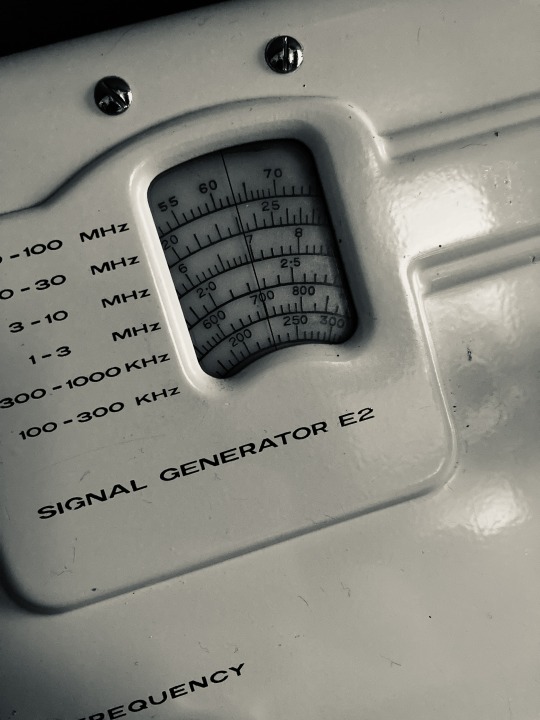
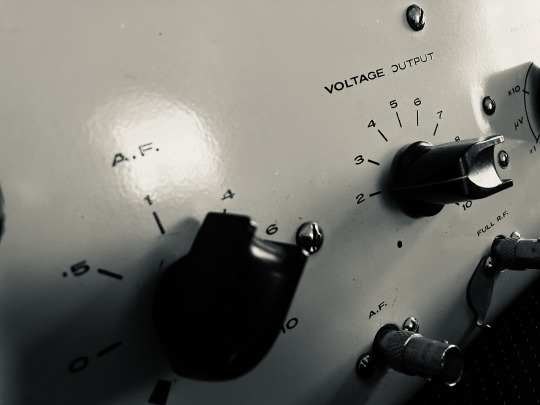
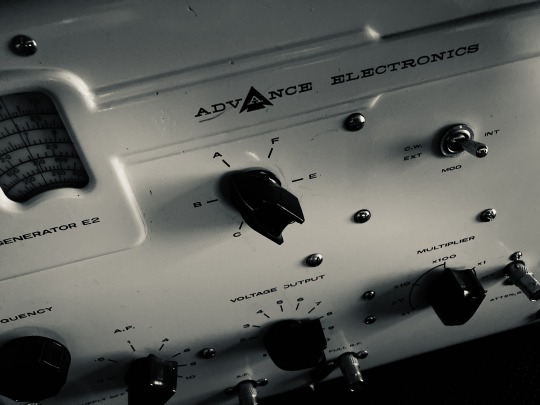
[New Addition] — Advance E2 Signal Generator / “The Calibrator”
Picked up for £11.12 and collected from Filey, this Advance Electronics E2 Signal Generator has just joined the ranks of The Interpreter / Ezra / Glitch Lab. A sturdy analogue relic of British engineering, it lights up like a slow-breathing machine spirit—awaiting purpose. Not yet connected to the AV switcher or oscilloscope chain, but already humming with potential.
Manufactured by Advance Electronics Ltd. in the UK (likely late 1950s–60s), this model—E2—was originally built to output radio frequencies for calibration and testing. Six bandwidth ranges (A–F), variable output voltage, internal/external modulation options. The kind of gear that once whispered order into the chaos of analogue waveforms. Now repurposed to embrace the opposite.
In the context of Ezra and The Interpreter, it becomes The Calibrator. Not as a source of scientific truth, but as a ritual artefact: a generator of pure signal in a lab deliberately built on glitch, interference, and miscommunication. Think of it as a relic of clarity placed inside a philosophy of distortion. A contradiction humming at 100kHz.
On a poetic level:
It speaks to the desire to generate meaning from noise.
A tool meant to test other tools—which now becomes subject to test itself.
A symbol of the old-world tech priesthood—knobs, dials, meters—interfacing with today’s fragmented, feedback-heavy systems.
There’s something beautifully Brutalist about its design: cream casing, industrial toggle switches, clear black typography. The meter window with its curved glass and concentric arcs wouldn’t look out of place in an early sci-fi film or a Cold War command bunker. Form and function tightly fused.
It will soon be tested in conjunction with:
CRTs + Oscilloscopes (via RCA splitter)
Audio feed through the waveform monitors
Potential modulations layered into Signal // Noise
#processzine#glitchlab#signalnoise#ezra#theinterpreter#vintageelectronics#analoguebrutalism#advanceelectronics#signalgenerator#audioartefact#coldwarstyle#fileyfind#testequipment#foundobject#soundasdata#electromysticism#aestheticengineering#modularmadness#postsignalera
0 notes
Text
#Anritsu#SignalGenerator#RFTesting#TestAndMeasurement#PhaseNoise#ElectronicsInnovation#TimesTech#electronicsnews#technologynews
0 notes
Text
#signalgenerator#radarsystem#signalprocessing#radartechnology#radarapplication#radarsignal#signalandprocessing#radarrange#radarsignalprocessing#radarsimulator#radartransmitter#radarreceiver#radardesign#radarequipment#radartesting#applicationsofsignalprocessing#radarcommunication#radarcommunicationsystem#dynamic signalanalyzers#radartargetsimulator#ScenarioSimulation#Modelling&Simulation#SignalProcessingcompanyinHyderabad#Radar&EWSensorTesting#DigitalSignalProcessing#AnsysSTKAGI
0 notes
Video
youtube
IC Station Multifunction Kit - Ideal beginners project - #192
0 notes
Text
#Anritsu#EcoSynLite#MicrowaveSynthesizer#SignalGeneration#RFTesting#AutomatedTestEquipment#PhaseNoise#FrequencySwitching#CompactDesign#TechInnovation#powerelectronics#powermanagement#powrsemiconductor
0 notes
Text
How does a cable locator work?
This post contains a brief introduction to cable location principles. What does a typical locator consist of? Active/passive location methods. Cable connection methods.

Determining the route of an underground cable or conduit is a common challenge. This challenge can be overcome with the help of special measuring devices. Although they have a similar principles of operation, they can have different names, such as cable locator, cable avoidance tool (CAT), underground wire locator, or cable tracer. Using these devices, it is possible to successfully determine the route of all sorts of cables (even fiber optical cables, given that they are equipped with a metal cordage or jacket). Moreover, these devices can sometimes detect the location of cable faults, such as cable damage or a short circuit.
Locators that were used to search for metal objects underground were first introduced 40 years ago. Initially, they were only used to detect water, gas, or sewer pipes. Today this issue has become significantly more complicated. In addition to metal pipes, an enormous amount of power and telecommunications cables have been laid underground. Over the years, cable locators have become more accurate and now come with new features. However, they still use the same fundamental technology as the very first models. This technology is based on electromagnetic field detection.
How do the aforementioned devices work? The cable locator consists of two parts: a signal generator (transmitter) and a receiver (detector). The former sends a signal to the cable line, while the latter detects it. It can be said that the receiver serves as the “heart” of the cable locator. Firstly, its characteristics and features determine the aggregate capabilities of the generator-receiver pair. Secondly, in some use cases, a generator may not even be required.
The cable locator receiver needs at least one sensor to “pick up” the electromagnetic field. This can come in the form of a whip antenna (capacitive sensor) or a coil (inductive sensor). Both have specific advantages and disadvantages. Therefore, some devices have one or even several (two or even three) replaceable sensors. The signal that they receive is amplified and processed. The resulting processed signal is presented to the operator.
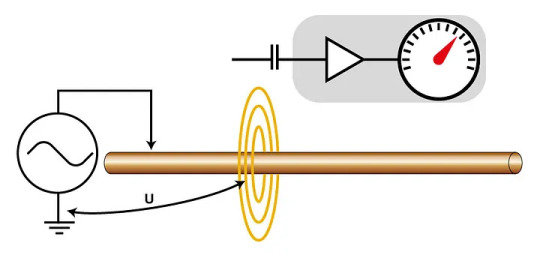
The signal can come from either a voltage or variable frequency current generator (200 Hz — 130 kHz). Some generators have a single fixed frequency. Others have multiple range of operating frequencies (up to 4) that can be chosen based on the use case. Some generators can generate a signal of several frequencies at the same time. And in some cases two frequencies may alternate.
A detection method is considered active if both receiver and generator are utilized. However, a sensor can also detect electromagnetic fields that are generated by other signal sources. This allows the device to detect and trace the routes of loaded power lines (50 Hz and higher harmonics of up to 3 kHz), cathodic protected pipelines (100 Hz), telephone cables via alarm signals (2–18 kHz), wired broadcasting networks (300 Hz — 130 kHz), as well as any conductive objects that have external radio transmitters which can induce a signal in long wave range (140 kHz — 300 kHz), and others. In such cases, the tracing can be performed in passive mode. In other words, it means that the use of a generator is not necessary.

In active mode, the signal can be sent to the cable via several different methods. The generator’s signal can be sent directly to the cable (direct connection), via an inductive antenna (remote antenna) or through an inductive coupler (signal clamp).

The direct connection method is self-explanatory. The transmitter must be physically connected to the cable that’s being traced. However, if this is impossible, one of the other two methods can be implemented.
An inductive antenna is a coil that receives a signal from the generator. The antenna is placed directly above the cable and induces a signal in it. Of course, such a signal is considerably less powerful as compared to one generated by a direct connection. But the upside is that there is no need to connect to the cable.
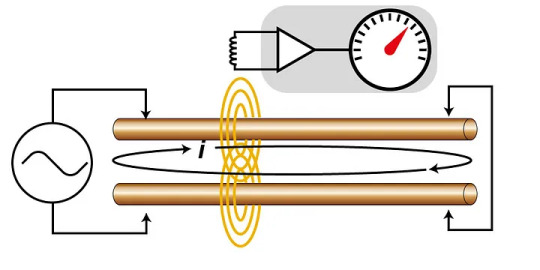
Remember that the inductive antenna signal is induced in all utilities at the location where it is placed. This can lead to errors if the signal is not only transmitted through the intended cable but also through other nearby utilities. However, the convenience of this method often outweighs its disadvantages.
Let’s assume that you decide to use a direct generator connection. If cable is long and the generator is not powerful enough, the signal will become undetectable at a certain point. To continue tracing in this scenario, the only option is to place an antenna where the signal intensity is strong enough to accurately determine the cable’s location. This procedure can be repeated several times, along the entire length of the cable.
An inductive antenna also provides other unique use case options. Remember that the antenna induces a signal in any conductor within its operating range. Let’s imagine that there are 2 people in this scenario. The first one has the transmitter with an antenna and the other has the receiver. Then they walk in parallel to one another at a distance of, for example, 65 ft. Thus, they can detect all conductive utilities that cross their path. To gain a more accurate assessment, the same procedure must be repeated several times in different directions.

Unlike an inductive antenna, an inductive coupler (signal clamp) only sends a signal to a single cable. Therefore, connecting to cable conductors is not required. However, using this method is only possible give that there is access to the cable itself. Let’s assume that the cable is laid inside cable duct. Then the inductive coupler (signal clamp) can be placed on the necessary cable via the well or hatch. Please note that both ends of the cable must be grounded. This is necessary to ensure that the signal transmission circuit is closed.
#UndergroundCableDetection#CableLocator#ElectromagneticFieldDetection#CableFaultDetection#SignalGenerator
0 notes
Photo
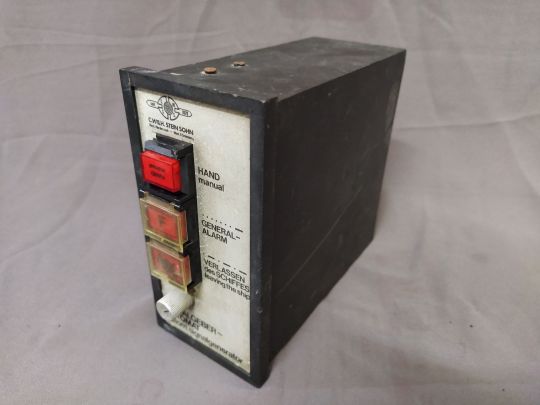


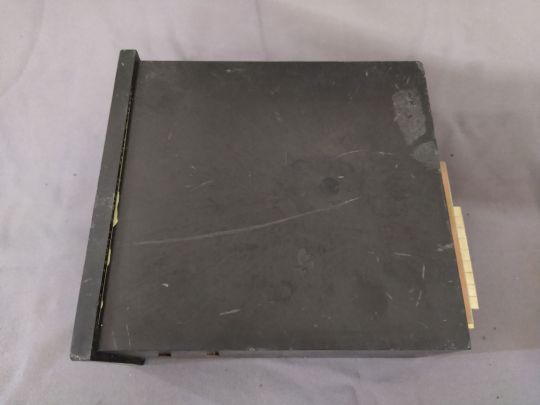


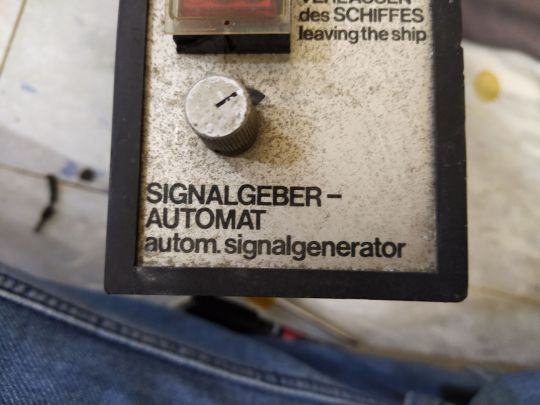
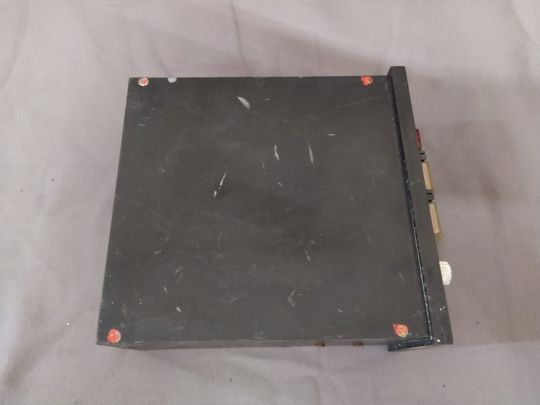

C WILH STEIN SOHN SIGNALGEBER AUTOMAT AUTOM SIGNALGENERATOR SI 1ATR TYPE: SIGNALGEBER VOLTAGE: 24 VDC, 220 VAC MADE IN GERMANY CONDITION: USED & WORKING QTY: 1 PC AVAILABLE REF: AL118
MORE DETAIL
#C WILH STEIN SOHN SIGNALGEBER AUTOMAT AUTOM SIGNALGENERATOR SI 1ATR#TYPE SIGNALGEBER#C WILH STEIN SOHN SIGNAL GENERATOR SIGNAL GEBER
0 notes
Photo
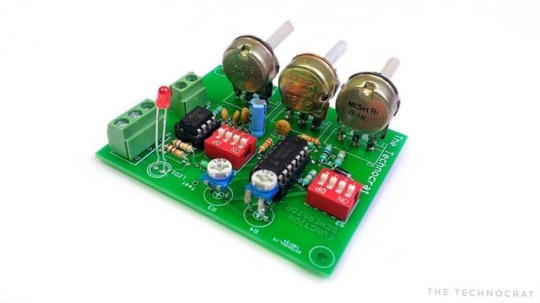
Signal Generator 🔊⚡ done and dusted. Watch making Video on my YouTube channel Tag two of your friends. #electronics #signal #signalgenerator #ic8038 #engineering #electricalengineering (at Bangalore, India) https://www.instagram.com/p/BqPIIx-goa8/?utm_source=ig_tumblr_share&igshid=10co23jleipdf
0 notes
Photo
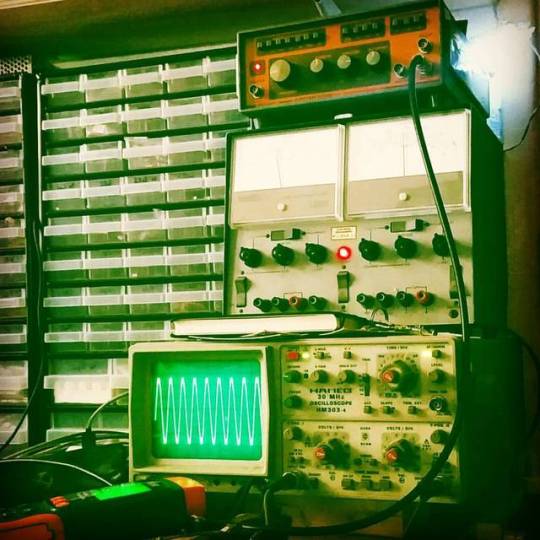
Testgear #audiostorm #seanmandrake #boutiqueguitareffects #boutiquepedalsandeffects #guitareffects #effectsguru #effectspedals #oscilloscope #signalgenerator #boutiqueeffects #handmade #madeinuk #guitarguru #pedalguru #pedalfreak #pedalmadness #sonicboom (at AudioStorm)
#effectspedals#seanmandrake#oscilloscope#boutiquepedalsandeffects#boutiqueeffects#pedalmadness#pedalfreak#effectsguru#signalgenerator#sonicboom#madeinuk#audiostorm#pedalguru#boutiqueguitareffects#guitareffects#handmade#guitarguru
0 notes
Text
0 notes
Text

Constelli is a signal processing company solving problems in Defense and Aerospace fields.
#signalgenerator#radarsystem#signalprocessing#radartechnology#radarapplication#radarsignal#signalandprocessing#radarrange#radarsignalprocessing#radarsimulator#radartransmitter#radarreceiver#radardesign#radarequipment#radartesting#applicationsofsignalprocessing#radarcommunication#radarcommunicationsystem#dynamic signalanalyzers#radartargetsimulator#ScenarioSimulation#Modelling&Simulation#SignalProcessingcompanyinHyderabad#Radar&EWSensorTesting#DigitalSignalProcessing#AnsysSTKAGI
0 notes
Text
#SignalGeneration#AWG#RFTesting#Microwave#QuantumResearch#RadarDevelopment#AerospaceTesting#SpectrumInstrumentation#Innovation#powerelectronics#powermanagement#powersemiconductor
0 notes
Video
instagram
Designing with inductors is hard. #audiostorm #seanmandrake #powerattenuator #powerbrake #hotbox #hotplate #thdhotplate #marshallpowerbrake #inductor #inductive #oscilloscope #signalgenerator #madeinuk #madeinmanchester #informativevideo #educationalvideo #electronics www.seanmandrake.com (at AudioStorm)
#educationalvideo#oscilloscope#electronics#madeinmanchester#thdhotplate#signalgenerator#inductive#powerattenuator#informativevideo#inductor#seanmandrake#hotbox#powerbrake#audiostorm#madeinuk#hotplate#marshallpowerbrake
0 notes
Text
Warum brauchen wir Netzwerk-Signalstörsender?
Jetzt kommuniziert unser Mobiltelefon über die Uplink-Frequenz mit der Basisstation und überträgt dann das Signal an die Mobilfunkvermittlungsstelle, um den Anruf zu realisieren. Im Standby-Zustand kommuniziert das Mobiltelefon mit der Basisstation über den Broadcast-Steuerkanal. Sobald ein Anrufbedarf besteht, weisen Sie zuerst den Mobiltelefondienstkanal entsprechend der spezifischen Situation des Kanals in der Nähe des Endgeräts zu, damit das Mobiltelefon auf den Dienstkanal springen kann, um den Anruf und die Datenübertragung zu realisieren. Sie können auch den WLAN Störsender des Mobiltelefons verwenden, um die Stärke der Umgebungssignale zu beurteilen. Das 2,4-G-WIFI-Signal kann auch eine wirksame Abschirmung bieten, sodass Personen, die Mobiltelefone oder einige elektronische Produkte verwenden, innerhalb dieses Abschirmungsbereichs keine Informationen senden und empfangen können. Nur mit einer solchen Garantie können diejenigen, die Schwierigkeiten haben, die Prüfung im Prüfungsraum abzulegen. Kandidaten haben eine faire und stabile Auftragsgarantie. Dieser Test ist sehr leise und erzeugt keine Geräusche. Es sorgt auch dafür, dass der Untersuchungsraum sehr leise sein muss und diese Abschirmungsmethode dem menschlichen Körper keinen Schaden zufügt. Kandidaten können die Fragen für alle Fälle in Ruhe beantworten.
📷 Die drahtlose 4g-Kommunikation muss ein ausreichendes Signal-Rausch-Verhältnis gewährleisten, um die Kommunikation effektiv zu empfangen und abzuschließen. Basierend auf dem obigen Arbeitsprinzip können wir schlussfolgern, dass ein 4g-Mobiltelefon-GPS Störsender im Allgemeinen aus einer Stromversorgung, einer elektronischen Abtaststeuereinheit, einer segmentierten Hochfrequenzmoduleinheit, einer Verstärkereinheit und einer Sendeantenneneinheit besteht. Das vom Signalgenerator erzeugte Abtastsignal durchläuft den Wechselrichter, tritt in den Oszillator ein und moduliert auf das Arbeitsfrequenzband der Mobilkommunikation und wird dann durch den Leistungsverstärker verstärkt, und die Spannungsreglerröhre steuert die Leistung. Das verstärkte Frequenz-Sweep-Signal wird in Form von Funkwellen in die Luft ausgesendet. Warum brauchen wir Handy-Störsender? In unserem Leben verlassen wir uns zunehmend auf eine Vielzahl von High-Tech-Geräten, diese Geräte machen unser Leben einfacher, erledigen Dinge schneller und bewegen sich leichter. Verschiedene High-Tech-Geräte spielen in unserer Welt eine wichtige Rolle. Doch Hightech-Geräte helfen uns, können uns aber auch schaden. Zum Beispiel können Handykameras Bösewichte überwachen, aber sie können auch von Bösen verwendet werden, um uns zu überwachen. Es kann verwendet werden, um uns in einem Videoformat aufzuzeichnen, und es kann unsere Privatsphäre preisgeben. Um die Handykamera zu löschen, tauchte der Handystörsender Wal-Mart auf. Mobile Jammer ist ein fortschrittliches Gerät, das die unbefugte Aufnahme unserer Videos über Mobiltelefone verhindert. Es kann an fast jedem Ort verwendet werden, um uns zu schützen. Es kann sicherstellen, dass an bestimmten Orten nicht alle Mobiltelefone richtig funktionieren. Ein weiteres Beispiel ist der cell blocker jammer Pf0030-C. Mobile Störsender können sicherstellen, dass Ihr Gespräch privat ist. Diese Art von Anti-Überwachungsgerät verhindert, dass Abhörgeräte Ihr Telefon oder Ihre Sprachgespräche abhören, indem sie Signale stören. Der Generator für weißes Rauschen arbeitet mit einer Frequenz, die den Ton potenzieller Abhörgeräte abdeckt.
0 notes
Text
#Spectrum Instrumentation#AWG#SignalGeneration#HighSpeedElectronics#AerospaceTech#Timestech#ElectronicDesign#electronicsnews#technologynews
0 notes
Text
#signalgenerator#radarsystem#signalprocessing#radartechnology#radarapplication#radarsignal#signalandprocessing#radarrange#radarsignalprocessing#radarsimulator#radartransmitter#radarreceiver#radardesign#radarequipment#radartesting#applicationsofsignalprocessing#radarcommunication#radarcommunicationsystem#dynamic signalanalyzers#radartargetsimulator#ScenarioSimulation#Modelling&Simulation#SignalProcessingcompanyinHyderabad#Radar&EWSensorTesting#DigitalSignalProcessing#AnsysSTKAGI
0 notes